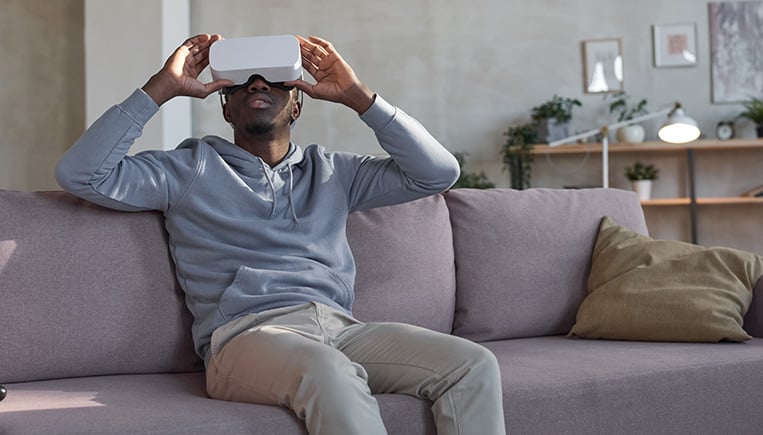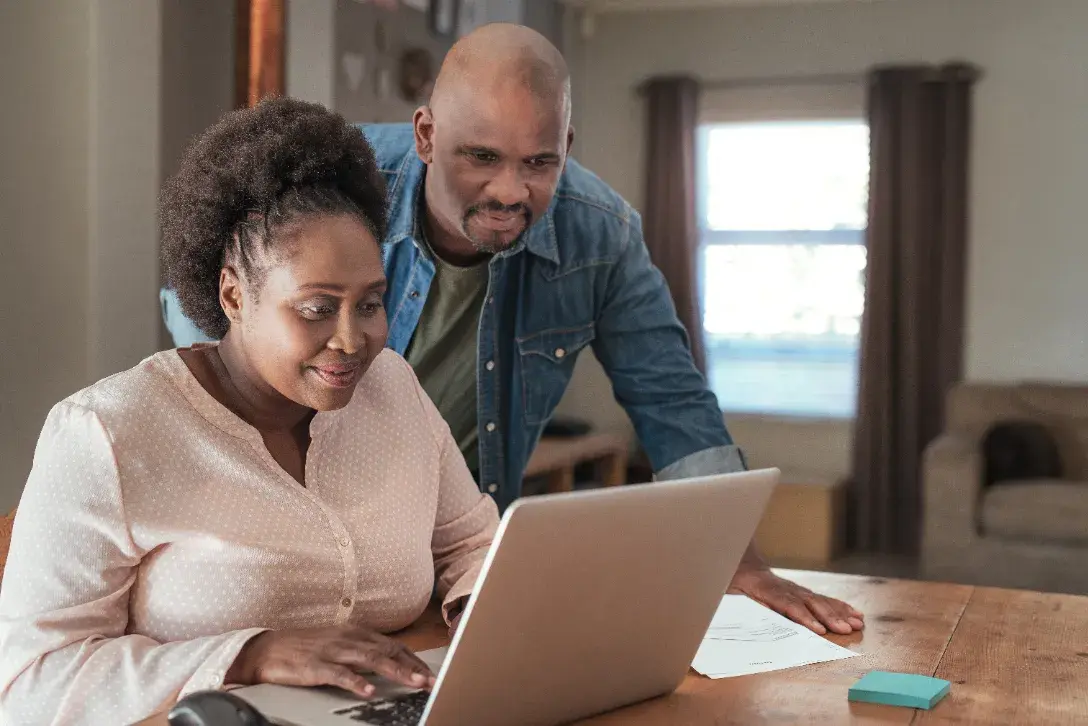When people hear “virtual reality,” most think of video games, concerts, or animated avatars exploring digital landscapes. But what if it could be more than that? What if it could be a bridge—a way to connect people to real-world health resources, education, and empowerment?
At Acclinate, we’ve always been committed to reaching people where they are. Now, that means showing up in spaces like Meta Horizon Worlds, where community, creativity, and communication converge in immersive 3D environments. I have the honor of leading Acclinate’s pilot VR initiative—not just to test a tool, but to reimagine what equitable health engagement can look like in a virtual space.
Virtual reality (VR) gives us a chance to rethink how we connect with people around their health. For communities that have been historically underrepresented, it can offer a fresh, accessible, and even joyful way to engage. That’s what makes it such a powerful fit for our work at Acclinate.
From Headsets to Health Education: My Journey Into VR
I didn’t enter Acclinate as a VR specialist. My background is in biotech. But over the years, I developed a deep love for virtual reality and what it can do for people—especially those who have dealt with anxiety, felt overlooked, or wanted a safe space to learn and be themselves.
After graduating from Drake State and completing a biotech internship, I was fortunate to stay on with Acclinate in a new capacity: helping the team explore how virtual spaces could support real-world health outcomes. The VR work I’ve done is a full fusion of my passions. It’s where my love for health education and mental wellness meets my creative identity as a builder and content creator in Horizon Worlds.
Why VR? Because Not Everyone Feels Comfortable Showing Up in Person
Health fairs and community events have long been a cornerstone of engagement, but they’re not for everyone. Some people don’t have the time, transportation, or physical ability to attend. Others grapple with social anxiety or don’t feel comfortable navigating crowded spaces.
VR removes many of those barriers. It allows people to engage in their own time, in a space they can control. And because everyone in VR appears as an avatar of their choosing, those real-world biases—race, gender, age, body type—don’t carry the same weight. It creates a space where information and connection are what matter most.
When we hold live events in Meta Horizon Worlds, users can simply stumble across them, hop in, and listen. There’s less pressure. More freedom. And for many, more willingness to engage.
Designing Safe, Immersive, and Impactful Experiences
So, what does VR that supports health equity actually look like?
It includes virtual spaces that mimic real-world settings—like a doctor’s office, an event hall, or a peaceful garden. These environments are designed for comfort and curiosity. Think immersive health education spaces with interactive posters, videos, and visuals. Think mock clinical trial walkthroughs that demystify the research process. Think games and quizzes that help reinforce key concepts in a way that feels fun, not intimidating.
“Quiet rooms,” where users can go to decompress, can also play a role, especially for those navigating mental health challenges. Some people enter these spaces just to scream, reflect, or sit in silence. That emotional release, even in virtual form, is powerful.
In every interaction, we at Acclinate see the potential for real healing, real learning, and real trust.
Representation, Reach, and the Ripple Effect
One of the most incredible things about working in VR is how expansive it is. I’ve met people from all over the U.S.—from Philly to Atlanta. But I’ve also built friendships with people in Europe and Asia, thanks to Meta’s growing global reach.
That international presence opens the door for engagement beyond U.S. borders and to share health education content with communities around the world. Even if our focus is clinical trial diversity in the U.S., the unique ability for VR to (quickly) spread messages of empowerment, representation, and access is undeniable.
And even for those who don’t own a headset, the content is still accessible. We can export animations and video from VR environments and post them on Instagram, Facebook, or websites. It’s a new kind of omnichannel outreach—one that keeps our message consistent, inclusive, and engaging, regardless of the medium.

Human Connection Is Important in the AI Era
AI plays an important role in advancing health equity, from personalizing outreach to identifying who needs support and when. But for all its capabilities, it works best when paired with something only humans can provide: presence.
That’s where virtual reality shines. VR doesn’t replace AI—it complements it by offering a space for real-time, human connection. When someone steps into a VR environment, they don't interact with a script or simulation. They enter a world designed by people, for people—with care, creativity, and empathy at the core.
I’ve seen it firsthand. Veterans, seniors (the majority of whom enjoy VR when provided an opportunity to use it), people living with disabilities—individuals who might feel isolated in other settings—come alive in these virtual spaces. They explore, express themselves, and connect on their own terms. That kind of engagement can’t be automated. It has to be felt.
What’s Next? Taking VR From Vision to Movement
We’re just getting started. But we already know there’s a future where VR can support health equity. What if, instead of just being told how a clinical trial works, potential participants could go to an on-site event, sit down with a headset, and explore the phases of a clinical trial in a hands-on, personalized way?
When we bridge the real and the virtual with purpose, we create something powerful. Something human. Something that meets people where they are—and invites them into a universe where they belong.
Want to learn more about how Acclinate is using technology to reimagine inclusive health engagement? Schedule a conversation with our team.






.webp)






